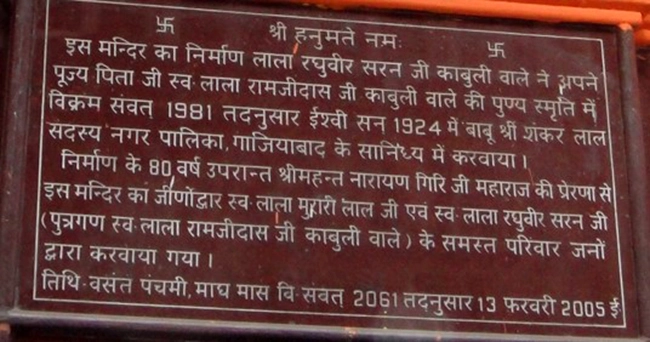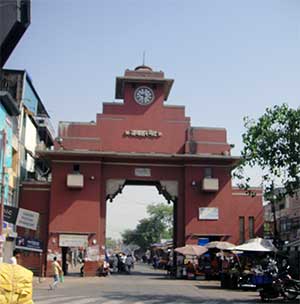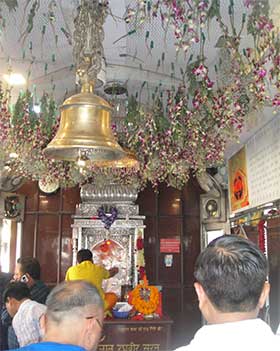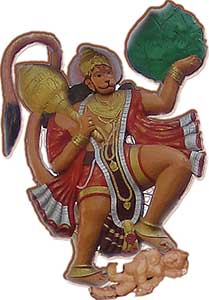
Ghaziabad
 Ghaziabad is a city with a rich history dating back nearly 300 years, situated on the eastern bank of the River Hindon. Similar to Shahjahanabad in Old Delhi, Ghaziabad was once a walled city with several gates. In 1740, the vizier Ghazi-ud-din, who served as the minister of the Moghul Emperor Ahmadshah and Alamgir the Second, founded the city and named it Ghaziuddinnagar after himself. Historical records indicate that the city was enclosed by four gateways known as Dasna Gate, Sihani Gate, Delhi Gate, and Shahi Gate.
Ghaziabad is a city with a rich history dating back nearly 300 years, situated on the eastern bank of the River Hindon. Similar to Shahjahanabad in Old Delhi, Ghaziabad was once a walled city with several gates. In 1740, the vizier Ghazi-ud-din, who served as the minister of the Moghul Emperor Ahmadshah and Alamgir the Second, founded the city and named it Ghaziuddinnagar after himself. Historical records indicate that the city was enclosed by four gateways known as Dasna Gate, Sihani Gate, Delhi Gate, and Shahi Gate.
These four gates formed a kite-like shape, with Delhi Gate Road and Old Munsfi Road serving as the main thoroughfares. Today, some of these gates have been renamed: Dasna Gate is now known as Subhas Dwar, Delhi Gate remains unchanged, Sihani Gate no longer exists, and Shahi Gate has been reconstructed a short distance away as Jawahar Dwar.
The residents of Ghaziabad have historically lived in harmony, forming a close-knit rural community that stands united in times of need, whether for local or national causes. Any issues that arise are typically brought to Chopla, where solutions are collaboratively found.
Chopla
 A chaupal, also known as a chopla, is a fundamental aspect of rural life. In popular perception, a chopla is any place where people gather to discuss their problems, celebrate their joys, share their sorrows, and resolve disputes. It is a sacred space of a secular nature that ensures freedom of speech and expression for all.
A chaupal, also known as a chopla, is a fundamental aspect of rural life. In popular perception, a chopla is any place where people gather to discuss their problems, celebrate their joys, share their sorrows, and resolve disputes. It is a sacred space of a secular nature that ensures freedom of speech and expression for all.
The chopla of Ghaziabad was located on what is now Old Munsfi Road. In the early twentieth century, there was a growing need for a place of worship in the vicinity. It was decided that a temple dedicated to Hanuman would be built near the existing well.
Temple for Shri Hanuman
Shri Hanuman, who had long resided in the hearts of the locals, made the decision to take a physical form and reveal himself to the people in the Mandir.
The temple located on the historic Munsfi Road in the Agrasen Market area is a unique sight, as it sits on an island-like structure in the middle of the road. This phenomenon of old temples forming island-like structures on roads is not uncommon in a ever expanding city.
Lala Raghuvir Saran ji Kabuli Wale undertook the task of constructing the temple in honor of his late father, Lala Ramjidas ji Kabuli Wale. With the active guidance of Babu Shri Shankar Lal, a Member of the Municipality in Ghaziabad, the temple was completed in the year 1924 AD.
 Eighty years after its establishment, the temple underwent renovation in 2005 AD, inspired by Shrimahant Narayan Giri ji Maharaj. The renovation was carried out by the family members of Late Lala Murari Lal ji and Late Lala Raghuvir Saran ji, who were the sons of Late Lala Ramjidas ji Kabuli Wale.
Eighty years after its establishment, the temple underwent renovation in 2005 AD, inspired by Shrimahant Narayan Giri ji Maharaj. The renovation was carried out by the family members of Late Lala Murari Lal ji and Late Lala Raghuvir Saran ji, who were the sons of Late Lala Ramjidas ji Kabuli Wale.
Temple today
The temple located on the historic Munsfi Road in the Agrasen Market area is a unique sight, as it sits on an island-like structure in the middle of the road. This phenomenon of old temples forming island-like structures on roads is not uncommon, as seen in other examples such as the "Vada vrikshak Sri Maruti Mandir in Dadar West, Mumbai" and the "Sri Anjaneya Swami Temple in Dewan Purniah Choultry, Mysuru". These occurrences are a result of the inevitable expansion of cities.
Despite its simplicity, the temple has undergone some recent additions, including a functioning old well, a vimanam over the Sri Hanuman sannidhi, a sannidhi for Sri Rama parivar, and a Siva linga. The sannidhi for Sri Hanuman is placed on an elevated platform with a small mandap in front.
The front elevation of the temple has been enhanced, featuring a stucco image of Sri Hanuman holding a gada in one hand and the sanjeevi parvat in the other, welcoming devotees from the south side. On the north side, a pillar-like structure resembling a ‘piao’ displays a stucco image of Sri Hanuman carrying Sri Rama and Lakshman on top, greeting worshippers.
 The temple faces south, as does the deity Sri Hanuman, also known as ‘Chopla Sri Hanuman’ or ‘Shri Dakshinmukhi Hanuman’. The presence of the Lord can be deeply felt by devotees standing before the deity, creating a spiritual connection that transcends the physical surroundings.
The temple faces south, as does the deity Sri Hanuman, also known as ‘Chopla Sri Hanuman’ or ‘Shri Dakshinmukhi Hanuman’. The presence of the Lord can be deeply felt by devotees standing before the deity, creating a spiritual connection that transcends the physical surroundings.
Shri Hanuman
The idol stands at about two feet in height, in a powerful and commanding posture facing south.
The Lord is depicted trampling a demon under His right foot, with His left leg slightly bent to increase the force applied. Both feet are adorned with intricately carved ornaments. The Lord holds a gada in His right hand and the Sanjeevi parvat in His left hand, with ornaments adorning His wrists and upper arms. His tail is elegantly positioned near His right shoulder.
The Lord's face is charming and innocent, with large, bright eyes that captivate the devotee and demand attention.
Location of the temple: "Shri Chopla Hanuman Mandir, Ghaziabad, U.P"
Experience
The presence of the Lord is so captivating that one can easily forget the bustling market street surrounding the temple. He draws all attention to Himself, creating an experience that is both enchanting and unforgettable.
SRI HANUMAN THINKS DIFFERENTLY, THINKS FAST
THINKS AHEAD AND ACTS FOR SURE
Ed [August 2025]



